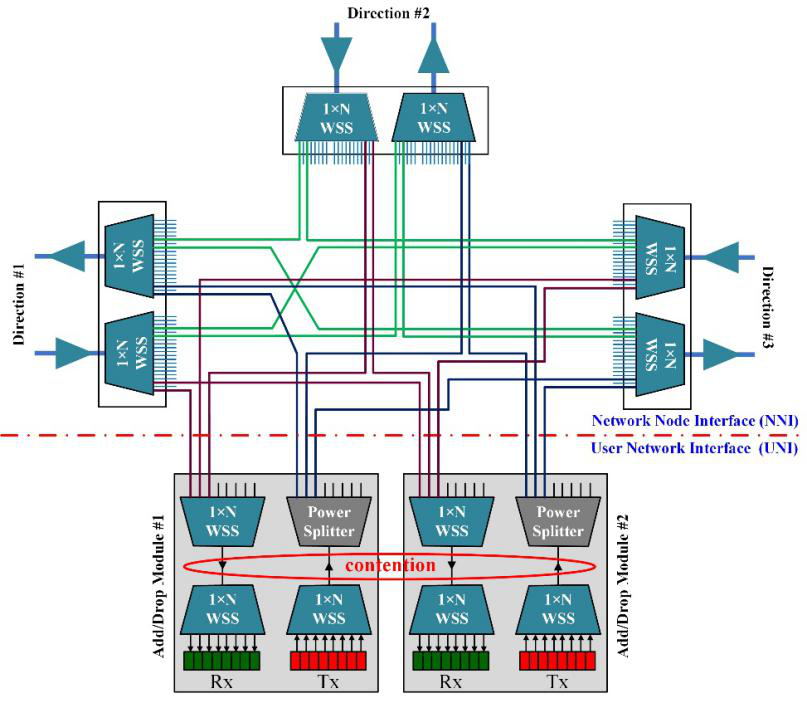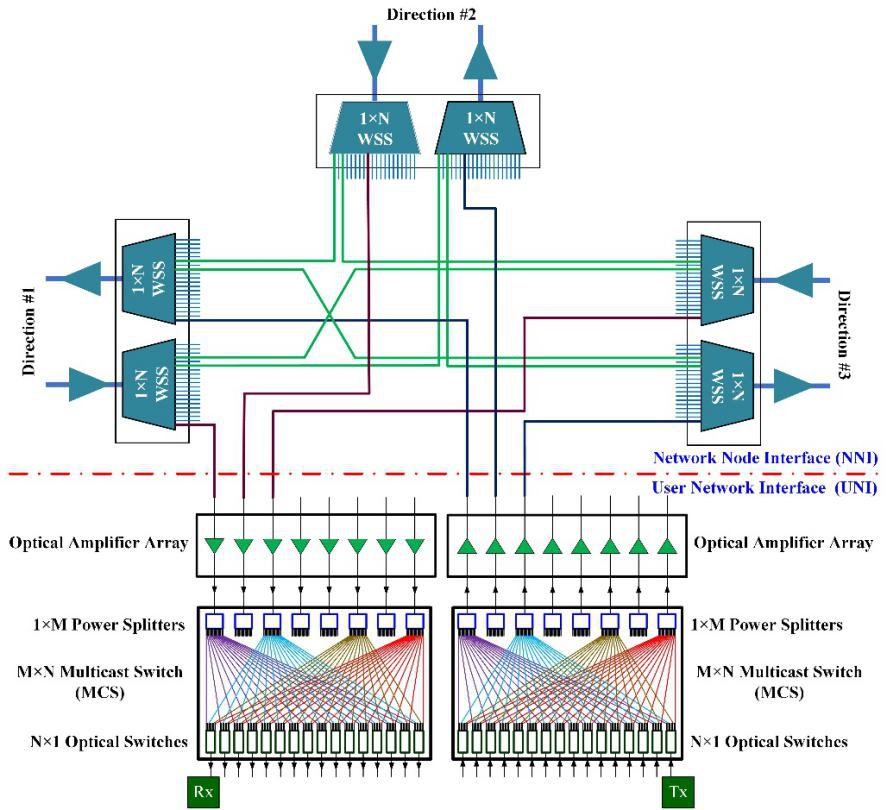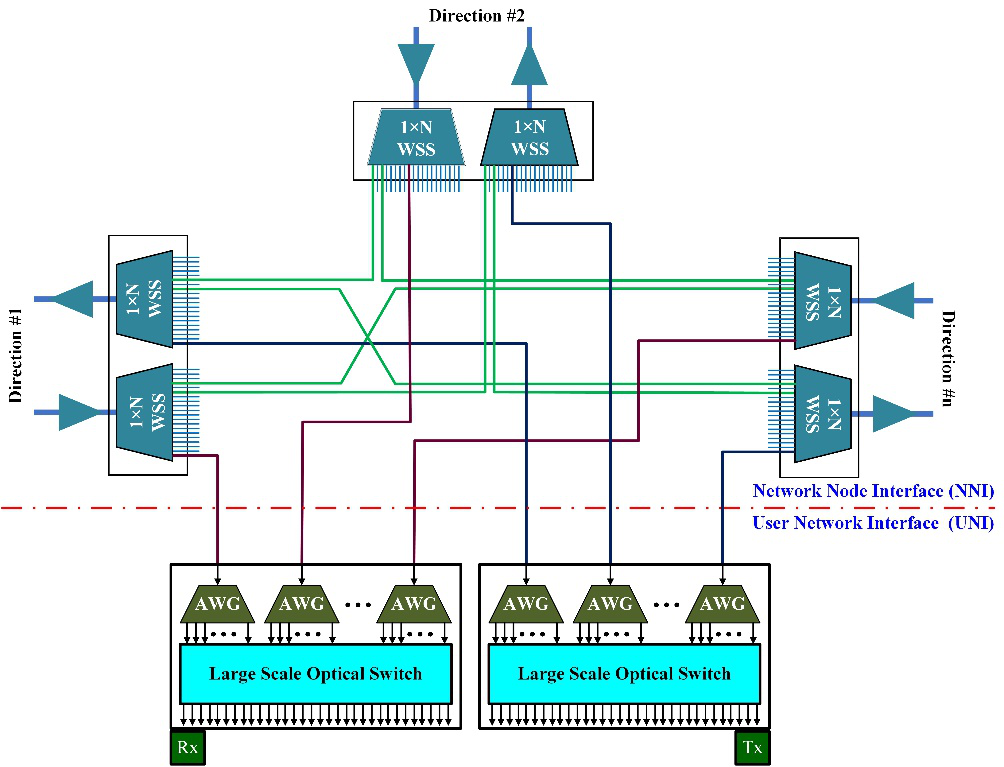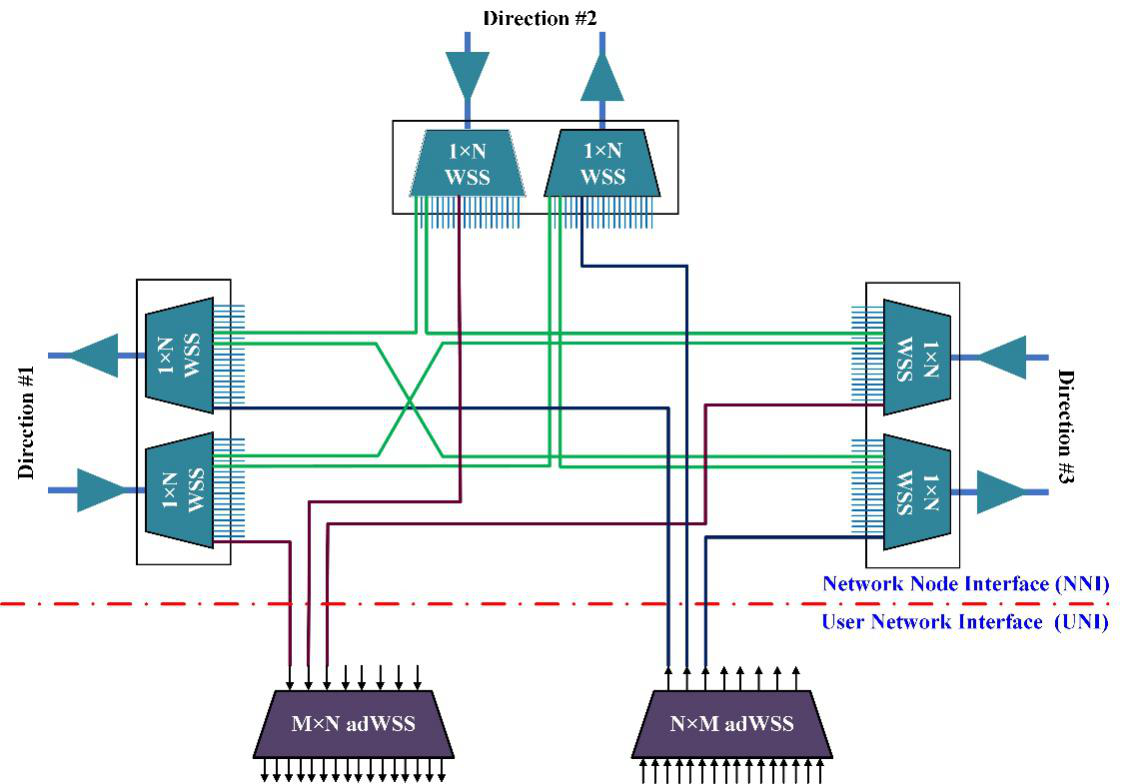





Which structure is better?
News Information
Understand the structure and characteristics of ROADM
- 2020-07-27
ROADM (reconfigurable optical add drop multiplexer) is a kind of reconfigurable optical add drop multiplexer. It is a device or device used in dense wavelength division multiplexing (DWDM) system. Through remote reconfiguration, it can dynamically set up or down the service wavelength, and realize flexible scheduling of services.
Each ROADM node contains a network node interface (NNI) and a user network interface (UNI). NNI interconnects DWDM signals from / to multiple transmission directions, which are switched between transmission directions with wavelength granularity. Uni uses wavelength granularity to download the signal whose destination is the local node and upload the signal from this node. In order to realize non blocking wavelength switching and load / download, the new generation of ROADM nodes need to be colorless, non directional and non competitive (CDC ROADM).
The ROADM node is usually composed of wavelength selection switch (WSS) and other modules. The function of CDC depends on the structure of ROADM node, while the flexible bandwidth function depends on the key module WSS. At present, there are three mainstream WSS technology solutions: MEMS, liquid crystal (LC) and silicon-based liquid crystal (LCOS). LCOS WSS supports flexible bandwidth function by nature, and LC WSS can also support flexible bandwidth function after optimized design, while MEMS WSS does not support this function. Here are five ROADM structures.
CD ROADM structure
The structure of ROADM shown in Fig. 1 is 1, and its NNI side is composed of 1 × N port WSS. A m-dimensional (only three-dimensional) ROADM node needs 2m WSS. The uni side contains several up / down modules (only two are shown in the figure). Each download module is composed of two 1 × N port WSS connected back-to-back, and each upload module is composed of a 1 × N port WSS and an optical splitter back-to-back. According to the function of 1 × N port WSS, this ROADM structure can support colorless and non directional up / down of signals. However, when the dimension of ROADM node is larger than the number of up / download modules on uni side, wavelength competition will occur in the red circle in the figure. Maybe we can solve the problem of wavelength competition by increasing the number of upload / download modules, but it is expensive. Therefore, this ROADM structure can not fully meet the function of CDC ROADM, and can only be determined as CD ROADM.

Figure 1. ROADM structure
ROADM structure based on multicast switch MCS
The second ROADM structure is shown in Figure 2. Like ROADM ා 1, its uni side is also composed of 1 × N port WSS, and the uni side is composed of multicast optical switch MCS. An M × N port MCS switch has m input ports and N output ports, which is composed of M 1 × N port optical splitter (PS) and n m × 1 port optical switches (OSW). The optical signal is input from one of the input ports, which is divided into N parts by the optical splitter and broadcast to all N optical switches; then the optical switch of the corresponding target output port selects the received optical signal, while other optical switches ignore the signal.
According to the function of 1 × N port WSS and MCS, ROADM structure ා 2 can realize CDC function. However, the loss of optical splitter in MCS is too large, so optical amplifier array is needed to supplement optical power. The configuration of optical amplifier array is expensive.

Figure 2. ROADM structure
Cdc-roadm based on WSS
Fig. 3 shows the ROADM structure ා 3, which is different from the previous structure in uni side. It uses two m × N ports WSS to realize the CDC (colorless, non directional, no competition) upload / download of signals. A m × N port WSS has m input ports and N output ports. It can switch any wavelength in any input port to any output port. The loss of M × N port WSS is much less than that of MCS, so there is no need to configure optical amplifier.

Figure 3. ROADM structure
ROADM structure based on WSS + AWG
The structure of ROADM ා 4 is shown in Fig. 4. Arrayed waveguide grating (AWG) and large scale matrix switch are used in uni side of ROADM. Large scale matrix switch is usually realized by 3D MEMS micro mirror array and free space optical structure, so it is also called 3D MEMS optical switch. 3D MEMS optical switch can realize very large scale, such as 512 × 512 ports.
In the download module of ROADM, all wavelengths are first demultiplexed by AWG, and then all demultiplexing ports are switched to the download port by 3D MEMS optical switch. The upload module works similar to the download module. This ROADM structure can realize the function of CDC, and does not provide 100% spare ports for all wavelengths that reach or originate from this node.

Figure 4. ROADM structure
ROADM structure based on adwss
The fifth ROADM structure is shown in Figure 5, which is somewhat similar to that in Figure 5. The difference is that m × N port WSS is replaced by M × N port adwss. Adwss is the abbreviation of up / down wavelength selection switch. It has m input ports and N output ports. All input ports are DWDM ports, and all output ports are single wavelength ports. Adwss can switch any wavelength from any input port to any output port.

Figure 5. ROADM structure
Which structure is better?
The NNI side of all structures is constructed with 1 × N port WSS, and the difference is in uni side. ROADM ා 1 only supports colorless and non directional functions, and is determined as CD ROADM. ROADM ා 2 belongs to CDC ROADM, but due to the high loss of optical splitter, it is necessary to configure optical amplifier array, and the cost is high. ROADM ා 3 introduces m × N port WSS into uni side to realize CDC function. However, there is only one supplier of M × N port WSS in the world. At the same time, the number of download ports provided by M × n WSS (8 × 24 typical ports) is far from enough for high-dimensional ROADM nodes. ROADM ාාාාාාාාාාාාාාාාාා. However, 100% spare transceiver modules (Rx and TX) are not cost-effective in terms of cost. The uni side of ROADM ා 5 requires the use of adwss. A typical adwss has 8 × 128 ports, which means that it is enough to configure two adwss in an 8-D ROADM node. However, the technology of adwss is not mature and there is still a long way to go for commercial use.
Based on the above considerations, roadm2 is the mainstream CDC ROADM solution; roadm3 is a potential competitor on the premise of cost reduction and more suppliers; roadm5 will be the most competitive solution when the technology is mature.
